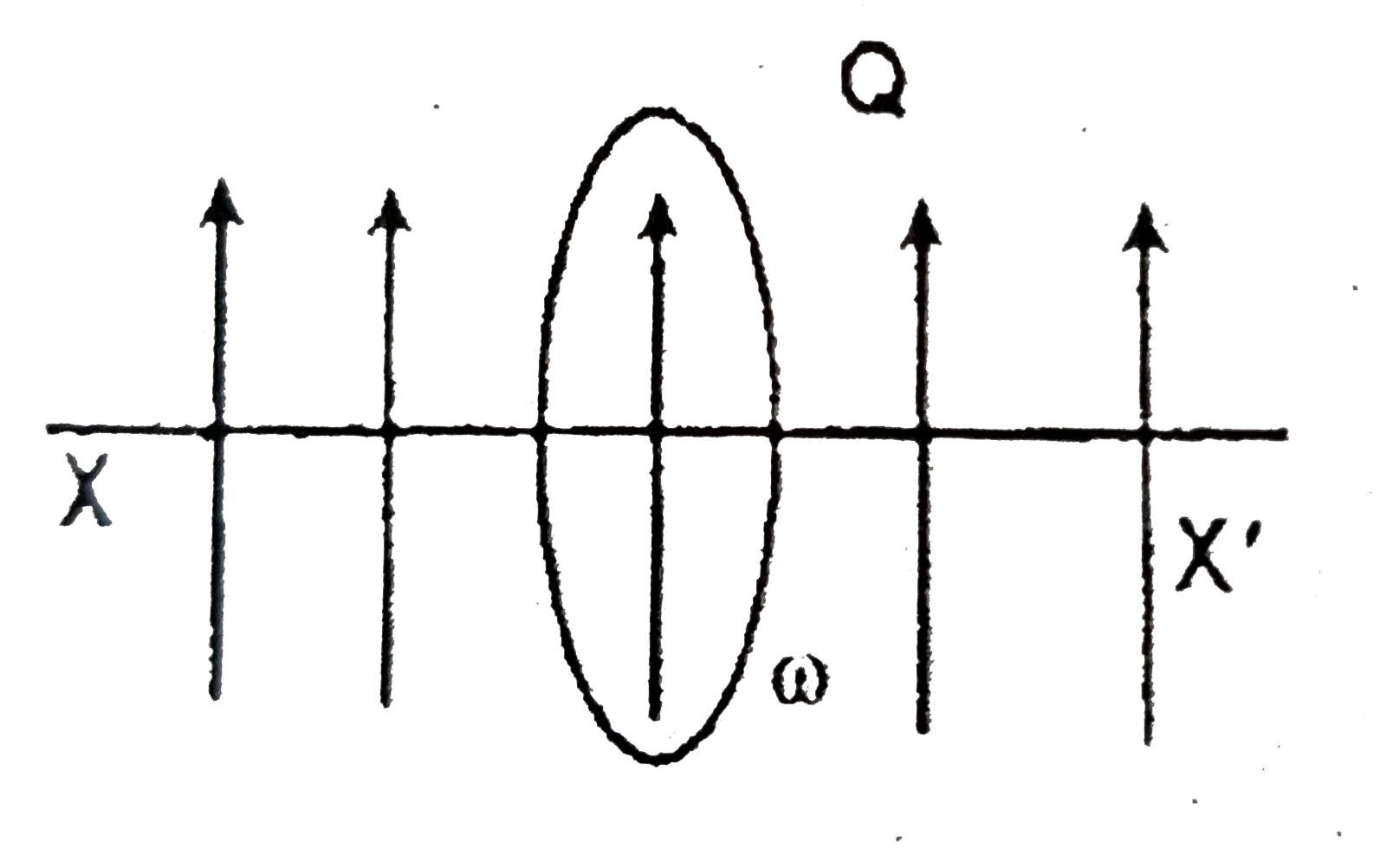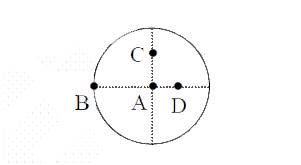Discs and are mounted on a shaft and may be connected or disconnected by a clutch . The moment of inertia of disc is one half that of disc . With the clutch disconnected, is brought up to an angular velocity .The accelerating torque is then removed from and it is coupled to disc by the clutch (Bearing friction may be neglected). It is found that of heat is developed in the clutch when the connection is made. What is the original kinetic energy of disc ?
To solve the problem, we will follow these steps:
Step 1: Define the Moments of Inertia
Let the moment of inertia of disc A be IA=I and the moment of inertia of disc B be IB=2I (since it is given that the moment of inertia of disc A is half that of disc B).
Step 2: Calculate Initial Angular Momentum
When disc A is rotating with an angular velocity ω0, the initial angular momentum Li of disc A is given by:
Li=IA⋅ω0=I⋅ω0
Step 3: Apply Conservation of Angular Momentum
When the clutch is engaged, the two discs A and B rotate together. The total moment of inertia when both discs are connected is:
Itotal=IA+IB=I+2I=3I
Let the final angular velocity after coupling be ω. By conservation of angular momentum, we have:
Li=Lf
Thus,
I⋅ω0=3I⋅ω
From this, we can solve for ω:
ω=ω03
Step 4: Calculate Initial Kinetic Energy
The initial kinetic energy Ei of disc A is given by:
Ei=12IAω20=12Iω20
Step 5: Calculate Final Kinetic Energy
The final kinetic energy Ef of the combined system (discs A and B) is:
Ef=12Itotalω2=12(3I)(ω03)2
Calculating this gives:
Ef=12(3I)⋅ω209=16Iω20
Step 6: Calculate Energy Lost as Heat
The energy lost as heat Q when the clutch is engaged is given by:
Q=Ei−Ef
Substituting the expressions for Ei and Ef:
Q=12Iω20−16Iω20
Finding a common denominator (which is 6):
Q=36Iω20−16Iω20=26Iω20=13Iω20
Step 7: Relate Heat Developed to Kinetic Energy
We know from the problem that the heat developed is Q=2000J:
13Iω20=2000
Thus, we can solve for the original kinetic energy Ei:
Ei=12Iω20=3×2000=6000J
Final Answer
The original kinetic energy of disc A is:
3000J
Let the moment of inertia of disc A be IA=I and the moment of inertia of disc B be IB=2I (since it is given that the moment of inertia of disc A is half that of disc B).
When disc A is rotating with an angular velocity ω0, the initial angular momentum Li of disc A is given by:
Li=IA⋅ω0=I⋅ω0
When the clutch is engaged, the two discs A and B rotate together. The total moment of inertia when both discs are connected is:
Itotal=IA+IB=I+2I=3I
Let the final angular velocity after coupling be ω. By conservation of angular momentum, we have:
Li=Lf
Thus,
I⋅ω0=3I⋅ω
From this, we can solve for ω:
ω=ω03
The initial kinetic energy Ei of disc A is given by:
Ei=12IAω20=12Iω20
The final kinetic energy Ef of the combined system (discs A and B) is:
Ef=12Itotalω2=12(3I)(ω03)2
Calculating this gives:
Ef=12(3I)⋅ω209=16Iω20
The energy lost as heat Q when the clutch is engaged is given by:
Q=Ei−Ef
Substituting the expressions for Ei and Ef:
Q=12Iω20−16Iω20
Finding a common denominator (which is 6):
Q=36Iω20−16Iω20=26Iω20=13Iω20
We know from the problem that the heat developed is Q=2000J:
13Iω20=2000
Thus, we can solve for the original kinetic energy Ei:
Ei=12Iω20=3×2000=6000J
The original kinetic energy of disc A is:
3000J
Topper's Solved these Questions
- BOOK - CENGAGE PHYSICS ENGLISHCHAPTER - RIGID BODY DYNAMICS 2EXERCISE - Exercise 3.321videos
RIGID BODY DYNAMICS 2
- BOOK - CENGAGE PHYSICS ENGLISHCHAPTER - RIGID BODY DYNAMICS 2EXERCISE - Exercise 3.413videos
RIGID BODY DYNAMICS 2
- BOOK - CENGAGE PHYSICS ENGLISHCHAPTER - RIGID BODY DYNAMICS 2EXERCISE - Exercise 3.111videos
RIGID BODY DYNAMICS 2
- BOOK - CENGAGE PHYSICS ENGLISHCHAPTER - RIGID BODY DYNAMICS 1EXERCISE - Integer11videos
RIGID BODY DYNAMICS 1
- BOOK - CENGAGE PHYSICS ENGLISHCHAPTER - SOUND WAVES AND DOPPLER EFFECTEXERCISE - Integer16videos
SOUND WAVES AND DOPPLER EFFECT
Similar Questions
What is the moment of inertia of a circular disc about one of its diameters ?
View SolutionA disc of mass m has a charge Q distributed on its surface. It is rotating about an XX' with a angular velocity ω. The force acting on the disc is
 View Solution
View SolutionFor a disc of given density and thickness, its moment of inertia varies with radius of the disc as :
View SolutionA disc is rotating with angular velocity ω. If a child sits on it, what is conserved?
View SolutionTwo circular discs are of same thickness. The diameter of A is twice that of B. The moment of inertia of A as compared to that of B is
View SolutionThe moment of inertia of a uniform circular disc is maximum about an axis perpendicular to the disc and passing through -
 View Solution
View SolutionThe moment of inertia of a disc of mass M and radius R about an axis. Which is tangential to sircumference of disc and parallel to its diameter is.
View SolutionA disc is rotaing with an angular velocity ω0. A constant retarding torque is applied on it to stop the disc. The angular velocity becomes ω02 after n rotations. How many more rotations will it make before coming to rest ?
View SolutionA nonconducing disc of radius R is rotaing about axis passing through its cente and perpendicual its plance with an agular velocity ω . The magnt moment of this disc is .
View SolutionAs shown in the figure, a disc of mass m is rolling without slipping with angular velocity ω. When it crosses point B disc will be in
 View Solution
View Solution

